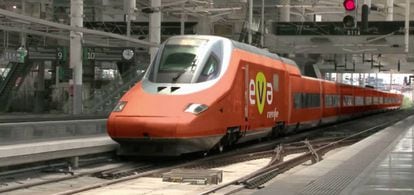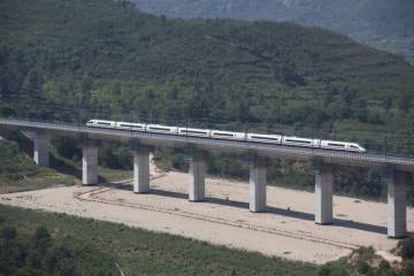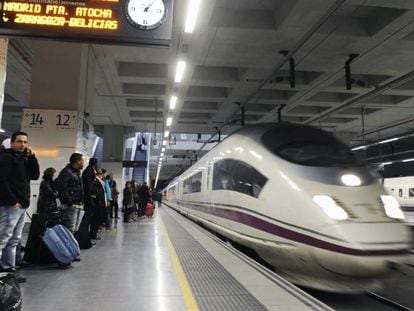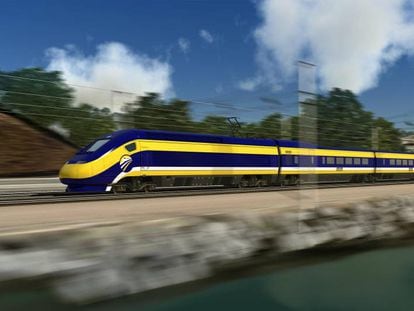Ryanair on rails? Spain’s high-speed AVE train tries a low-cost formula
The EVA, which will run between Madrid and Barcelona, will have 30% more seats and charge passengers additional fees for extra services


Spain’s state railway company, Renfe, is experimenting with low-cost formulas that mirror the airline industry’s successful foray into budget transportation.
The rail service – soon to be launched as EVA – will knock 25% off the price of the regular AVE when it begins its high-speed journey between Madrid and Barcelona next year.
The pilot project is designed to prepare Renfe for the liberalization of passenger train travel within the EU in 2020
The pilot project is designed to prepare Renfe for the liberalization of passenger train travel within the EU in 2020.
The most significant change for passengers accustomed to the AVE bullet trains will not be speed, but comfort. Renfe squeezes five seats to a row where once there were four, thereby increasing capacity by 30%.
The company also saves on station fees. In Madrid, the EVA will continue to arrive and depart from the centrally located Atocha station, but in Barcelona it will stop near El Prat de Llobregat rather than Sants, where the regular AVE reaches. The EVA station in El Prat is close to Barcelona’s airport, but some way from the city center.

EVA passengers will also have to make do with vending machines instead of a cafeteria, and there will be no business class cars or on-board personnel service.
Additional costs for seat selection and express train maintenance are some of the other ways in which Renfe is trimming the fat from its high-speed service.
This formula was pioneered by low-cost airlines such as Ryanair and easyJet, whose aircraft are stuffed with extra seats, tend to land in secondary airports, and charge for all extra services.
The 25% ticket discount will bring the average price of a trip to Barcelona down to €65 one-way or €130 for a return journey. The EVA will also introduce a scheme whereby passengers can pay an annual fee for unlimited travel. This annual system has already been tried and tested in Germany, and if it works with the EVA it could be applied to all long-distance train travel in Spain.
The 25% ticket discount will bring the average price of a trip to Barcelona down to €65 one-way
Renfe will invest €4 million to refit three Talgo 102s currently serving as AVE trains, adding room for special luggage storage and pets, a play area for children, tables for six rather than four passengers, tighter seating arrangements and vending machines in place of a lounge car.
The company expects that EVA will start its test run in February 2019, with an initial daily service of five trips each way. As the time spent on train maintenance and cleaning of the trains is reduced, the frequency of trips will increase, hiking the total number of annual kilometers covered per train from 360,000 to 500,000.
Once the EVA is up and running, there will be just one stop between Madrid and Barcelona at Camp de Tarragona station, although more stations could be included in the future, depending on demand. If the service proves successful, the EVA might be rolled out on other routes, such as Madrid to Seville.
English version by Heather Galloway.












































